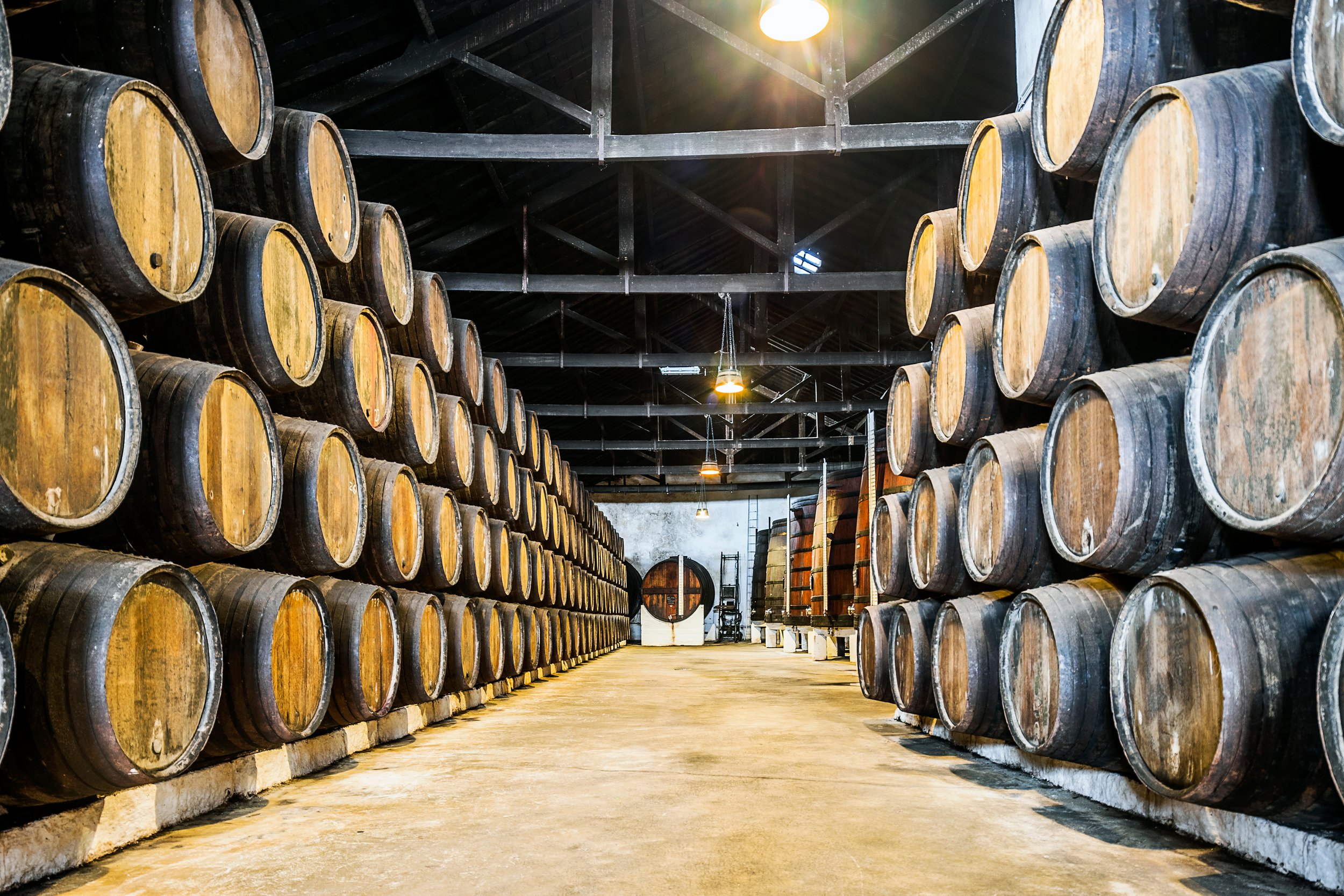The Art of Port Wine: Portugal's Liquid Treasure
Today, we delve into the enchanting world of Port wine, Portugal's most famous fortified wine, and explore its production process, styles, aging, and tips on how to truly savor this delightful beverage. So, sit back, grab a glass of your favorite Port, and let's embark on a journey through the rich history, flavors, and intricacies of this luxurious drink.
The Production Process
Port wine, known as Vinho do Porto in Portuguese, is a unique fortified wine produced exclusively in the Douro Valley of northern Portugal. The process begins with the careful selection of native grape varieties, such as Touriga Nacional, Tinta Roriz, and Tinta Barroca, which are harvested, crushed, and fermented.
Unlike traditional wines, Port's fermentation is stopped early by adding a neutral grape spirit called aguardente, which raises the alcohol content and leaves residual sugar in the wine. This distinctive process results in a sweeter, stronger wine, with alcohol levels typically around 19-20%.
Styles of Port
There is a wide range of Port styles to suit every palate, from crisp and fruity to rich and nutty. Some of the most popular styles include:
Ruby Port: Young, fruity, and vibrant, Ruby Port is the simplest and most widely produced style. It's aged for a short period (2-3 years) in large oak vats and offers intense, fresh fruit flavors.
Tawny Port: Aged in smaller oak casks, Tawny Port undergoes gradual oxidation and evaporation, leading to a nuttier, caramelized flavor profile. The aging process can range from 10 to 40 years, with the label indicating the average age of the blend.
Vintage Port: Produced only in exceptional years, Vintage Port is made from the best grapes of a single harvest. It's bottled after 2 years of aging in oak and continues to mature in the bottle, often for decades, developing remarkable complexity and depth of flavor.
Late Bottled Vintage (LBV): A more accessible alternative to Vintage Port, LBV is made from a single year's harvest and aged in oak for 4-6 years before bottling. It offers a taste of vintage quality at a fraction of the price.
Aging Port Wine
Aging plays a crucial role in the development of Port's flavor profile. While Ruby and LBV Ports are ready to drink upon release, Tawny and Vintage Ports benefit from extended aging. Tawny Ports can be aged for decades, with the finest examples showcasing exquisite notes of dried fruit, nuts, and spices. Vintage Ports, on the other hand, can take 15-20 years or more to reach their peak, and will continue to evolve in the bottle for many years thereafter.
How to Enjoy Port Wine:
To make the most of your Port wine experience, follow these simple guidelines:
Serving Temperature: Serve Ruby and LBV Ports slightly chilled (around 55°F/13°C), while Tawny and Vintage Ports are best enjoyed at cellar temperature (around 65°F/18°C).
Decanting: Vintage Ports require decanting to separate the sediment and allow the wine to breathe. Tawny and Ruby Ports typically do not need decanting, but may benefit from a brief aeration.
Glassware: Use a small, tulip-shaped glass to concentrate the wine's aroma and direct it towards your nose, enhancing the sensory experience.
Pairings: Port pairs beautifully with a variety of foods. Ruby and LBV Ports complement rich, chocolate desserts, while Tawny Ports are a perfect match for nutty, caramel-based treats or a cheese platter. Vintage Ports shine when paired with strong blue cheeses or dark chocolate.
Portugal's Port wine is a testament to the country's rich winemaking heritage, offering a diverse and captivating array of flavors and styles. From the youthful exuberance of Ruby Port to the unparalleled complexity of Vintage Port, there's a style to suit every palate and occasion. By understanding the production process, aging, and proper serving techniques, you can fully appreciate the art of Port wine and elevate your tasting experience.
We hope this exploration of Port has piqued your curiosity and encouraged you to further discover the wonders of Portugal's most famous fortified wine. Whether you're a seasoned Port enthusiast or new to this delightful beverage, there's always more to learn and appreciate in the ever-evolving world of Port wine. Cheers!
